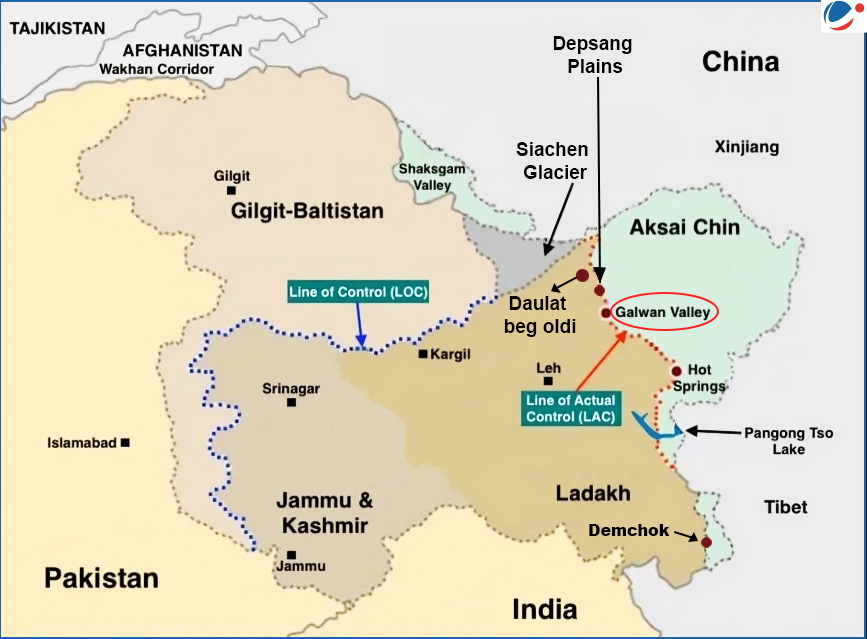Agreement seeks to resolve military standoff that started in April 2020, addressing issues in areas of Indo-China western border along eastern Ladakh e.g. Demchok and Depsang.
- Tensions in 2020 arose from China's objections to India's infrastructure projects, especially a road in the Galwan Valley (Ladakh) connecting to a key airbase.

India China Border Dispute
- India’s 3,488-km border with China is not clearly demarcated and there is no mutually agreed LAC along certain stretches.
- India-China border is divided into three sectors:
- Western Border (Ladakh): dispute focuses on the Johnson Line from 1860s, which includes Aksai Chin in India whereas China considers MaCartney-MacDonald Line as border.
- Middle Sector: In Himachal Pradesh and Uttarakhand, boundary dispute is minor.
- Eastern Sector: In Arunachal Pradesh and Sikkim, dispute centers on the McMahon Line established in 1914 Simla Convention.
- China rejects MacMahon line.
Border Dispute Settlement Mechanism:
- India and China have signed five agreements to manage disputes along the Line of Actual Control (LAC):
Agreements | Focus |
1993 Agreement | Focused on maintaining peace and tranquility along the LAC |
1996 Agreement | Established confidence-building measures in military operations |
2005 Protocol | Detailed implementation of military confidence-building measures |
2012 Agreement | Created a Working Mechanism for Consultation & Coordination on India-China Border Affairs (WMCC) |
2013 Agreement | Enhanced border defense cooperation |




